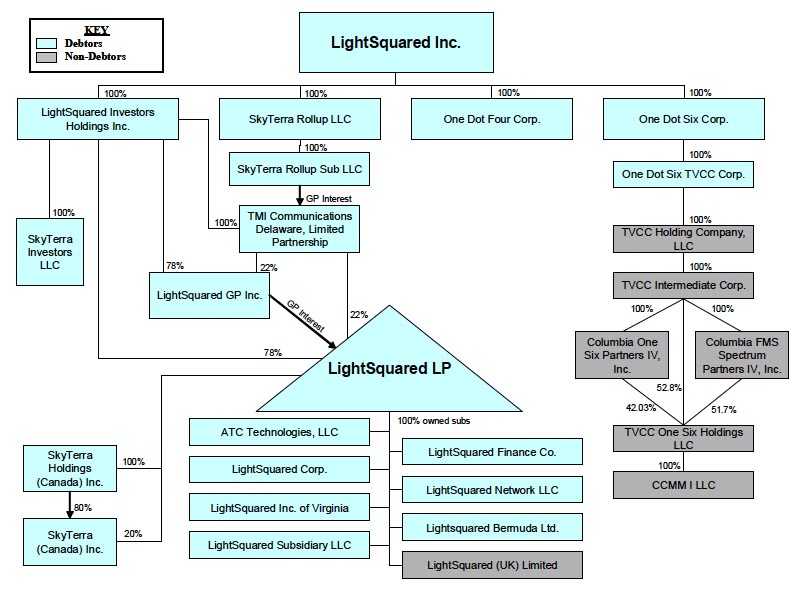The announcement of the White House’s new strategy to speed development of next-generation wireless networks is likely to create a new front in the years-long fight over a proposed project that could interfere with GPS spectrum.
That proposal, first made by LightSquared and now being pursued by its successor firm Ligado Networks, would take spectrum allocated for satellite usage and rescope it to include a still-to-be-defined terrestrial network or networks.
The Trump Administration, like its predecessor, is looking for more spectrum to support ballooning demand for mobile broadband service including, in particular, networks using the emerging 5G standard. 5G, that is fifth generation cellular wireless, promises enormous leaps in capacity and connectivity. 5G’s speed and data capacity (up to 20 gigabits per second according to the ITU IMT-2020 standard) comes from its use of the millimeter waves of frequencies at 15 gigahertz and higher. Lower frequencies can also be used for 5G but do not have the same rarified capabilities.
The White House strategy effort is reportedly, at least in part, an effort to beat China to the 5G development finish line, thereby winning the economic benefits of being first to market with widely expected new capabilities and applications. To do this the new National Spectrum Strategy sets goals that stress spectrum sharing and cooperation between the federal spectrum users and others — including the private sector — while accounting for critical safety and security concerns. Those goals are:
- a) increase spectrum access for all users, including on a shared basis, through transparency of spectrum use and improved cooperation and collaboration between Federal and non-Federal spectrum stakeholders;
(b) create flexible models for spectrum management, including standards, incentives, and enforcement mechanisms that promote efficient and effective spectrum use, including flexible-use spectrum licenses, while accounting for critical safety and security concerns;
(c) use ongoing research, development, testing, and evaluation to develop advanced technologies, innovative spectrum-utilization methods, and spectrum-sharing tools and techniques that increase spectrum access, efficiency, and effectiveness;
(d) build a secure, automated capability to facilitate assessments of spectrum use and expedite coordination of shared access among Federal and non-Federal spectrum stakeholders; and
(e) improve the global competitiveness of United States terrestrial and space-related industries and augment the mission capabilities of Federal entities through spectrum policies, domestic regulations, and leadership in international forums.
How these goals will be met will be largely defined by the Department of Commerce. President Trump gave the Secretary of Commerce nine months to develop a “long-term National Spectrum Strategy that includes legislative, regulatory, or other policy recommendations.” As an initial step the White House is giving federal agencies six months to report their future spectrum needs to Commerce.
Ligado has long said that it intends to pursue 5G. On October 29, just days after the announcement of the White House strategy, it announced plans to work with Ericsson and Sequans to develop new 5G technology for the satellite component of a satellite and terrestrial mobile network that “will utilize 40 MHz of mid-band spectrum to provide 5G solutions for critical industries and advance the next generation of American infrastructure.”
“Ligado applauds the administration’s commitment to making America 5G First and to maintaining our global competitiveness and national security,” said spokesman Ashley Durmer, Ligado’s senior vice president of government relations and public affairs. “We look forward to securing regulatory approval to unlock 40 MHz of mid-band spectrum immediately, create jobs, inject hundreds of millions of dollars of investment into our country’s digital infrastructure, and help build America’s 5G future.”
The frequencies that Ligado wants to use for 5G, however, are in the L band close to those used by GPS. Though Ligado has modified its plans to reduce interference, studies have shown there continues to be a significant risk of interference to GPS receivers.
The GPS community is getting involved in 5G and making sure that the need to protect GPS signals — which are necessary for the synchronization of wireless networks — is clear.
A month before announcing the 5G strategy the White House held a summit of stakeholders that included the GPS Innovation Alliance. In a blog item posted on the GPSIA website David Grossman, GPSIA executive director and Morgan Reed of the App Association explained why protecting GPS frequencies from interference is vital to the success of 5G
Ensuring that every American can take advantage of innovative (5G) applications “requires industry and government to work together,” they wrote. “It will require a spectrum policy that recognizes the inherent differences in functionality and technical attributes between 5G communications networks and navigation services like GPS. Our economy, consumers, and businesses all benefit when we maintain the policy of abiding by internationally accepted levels for interference protection of signal reception, thereby preserving a “quiet spectrum neighborhood” of compatible satellite services. In doing so, the United States will ensure that GPS signals remain continuously available, accurate, reliable, and resilient while simultaneously developing 5G technologies for compatible deployment.”






